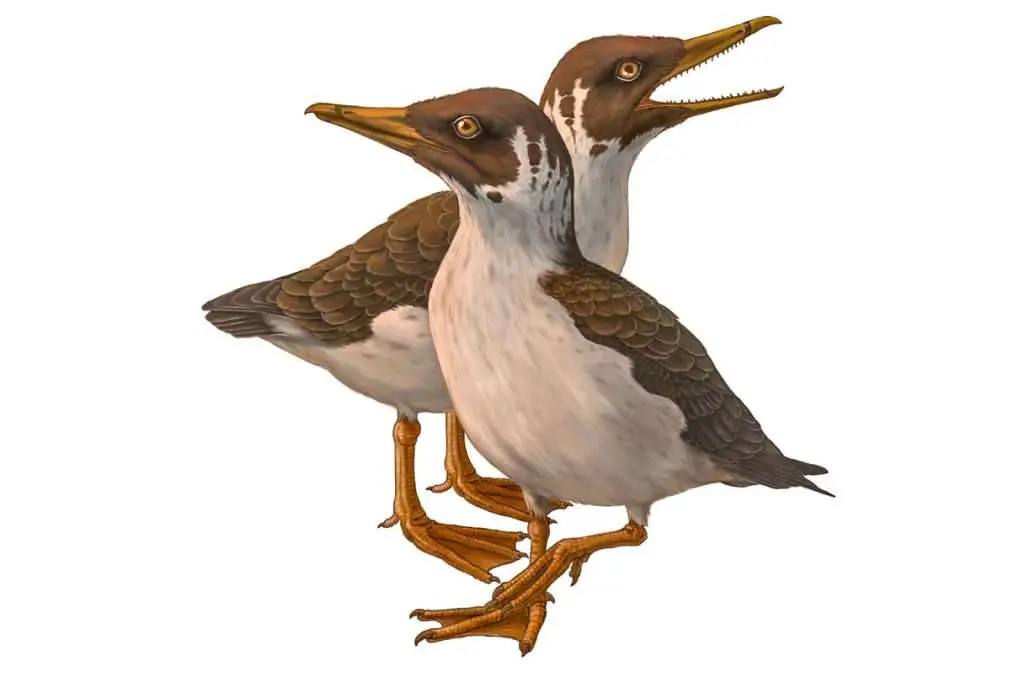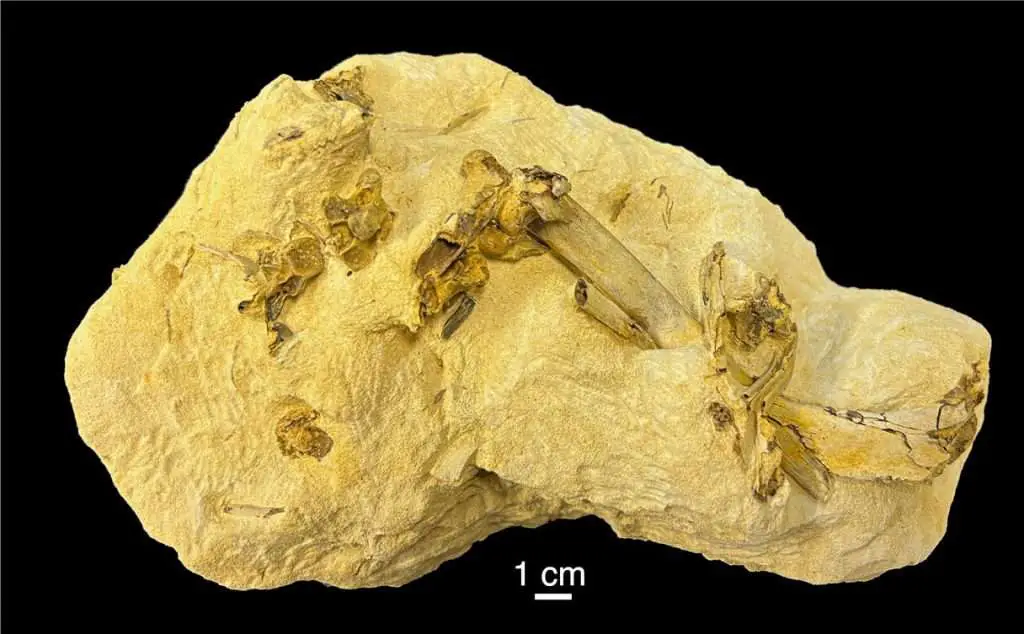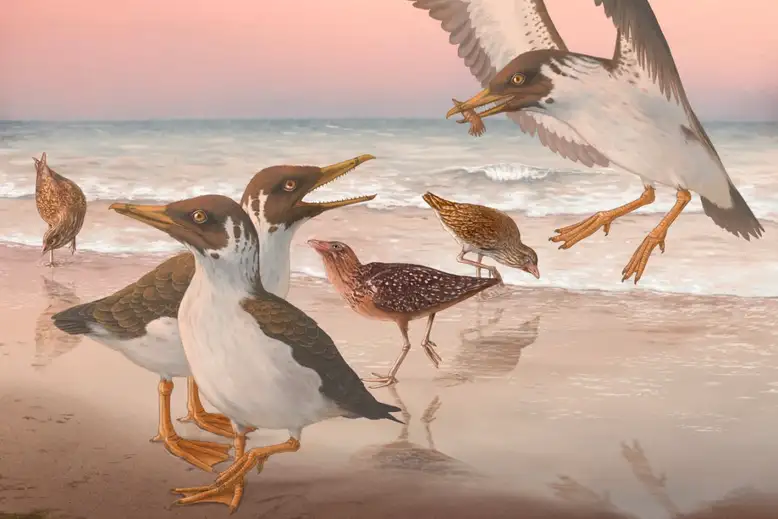Zoologists have separated birds into two groups for about 200 years:
- Those with movable upper jaw joints that allow the upper beak to move.
- A far smaller group, which includes ostriches and emus, has an upper palate that is fused, making their upper beaks less maneuverable.
Janavis finalidens: New species of toothed bird from the Age of Dinosaurs (Video)
Zoologists believed that ostriches and their relatives were the evolutionary older group of birds, with mobile upper beaks emerging later in the history of birds because this fused palate was also present in dinosaurs, including the feathered ones that were the ancestors of today’s birds.
Just before the catastrophic asteroid strike that wiped out the dinosaurs roughly 67 million years ago, paleontologists have now discovered a crucial skull bone in an ancient bird.
The researchers decided that the ancient bird also had a moveable upper beak because the bone, which is part of the top jaw, looked a lot like a similar bone in modern chickens and ducks that is also moveable.
Since the rest of the fossil shows that it was related to Ichthyornis, an ancient bird that lived about 20 million years ago, scientists think that the jointed beak was present in even older animals.

Overall, the new study reveals that the ancestor of contemporary birds already had a jointed beak and that the fused palate later re-evolved in ostriches and their relatives.
According to Christopher Torres, a paleontologist from Ohio University in Athens who was not involved in the new research, “it’s redefining how we’ve been looking at the evolution of birds since the time of Linneaus.”
“We believed we had this figured out thousands of years ago, but now we’re discovering fossils that prove we didn’t.” We mixed things up.
The fossil was found in a Belgian quarry near the border with the Netherlands more than 20 years ago. It wasn’t fully described until 2002, and many of its parts were still stuck in a block of mud.
Paleontologists Juan Benito and Daniel Field from the University of Cambridge took the fossil from the Natural History Museum of Maastricht in 2018 so they could use computer tomography to look at the bones that were left.
Despite their hopes, the early scans only revealed the vertebrae and ribs of the animal. They abandoned the endeavor for more than a year, disappointed.
When Benito went back to the fossil, he was perplexed by a bone that had been classified as a shoulder bone in an earlier investigation but appeared to be too small. He understood that it was a chunk of a bone that had been split in two.
Benito, Field, and their colleagues came to the conclusion that the complete structure was a very fragile portion of the upper palate, a bone called the pterygoid that is essential to the jointed upper beak, after locating the companion piece and putting the two together.

The researchers claim the bird is a previously undiscovered species and call it Janavis finalidens in honor of Janus, the Roman deity of beginnings, endings, and transitions. They describe the more complete fossils found today in nature.
It weighed an estimated 1.5 kilos and was roughly the size of a gray heron. It was a coastal flyer that traveled the shallow seas, which at the time spanned what is now Belgium and the Netherlands.
Julia Clarke, a paleontologist at the University of Texas at Austin who studies the evolution of birds, says that the Janavis fossil is “an important snapshot that shows the skull in a new way and adds to the evidence of what features were present in the birds’ ancestors.”
Its earlier Ichthyornis relatives’ skulls have been documented in recent years with bones that may have indicated the bird’s upper palate was joined, although the evidence was still hazy at the time.
Now, Field claims, “the precise skull bone that emerged was the specific one we required” in the Janavis fossil to demonstrate the flexibility of the top beak. Torres concurs. He compares it to a puzzle where one piece was missing and we now have it.
All the information and photo credit goes to respective authorities. DM for removal please.
Related: A new calculation reveals that Tyrannosaurus Rex might have been larger and heavier

